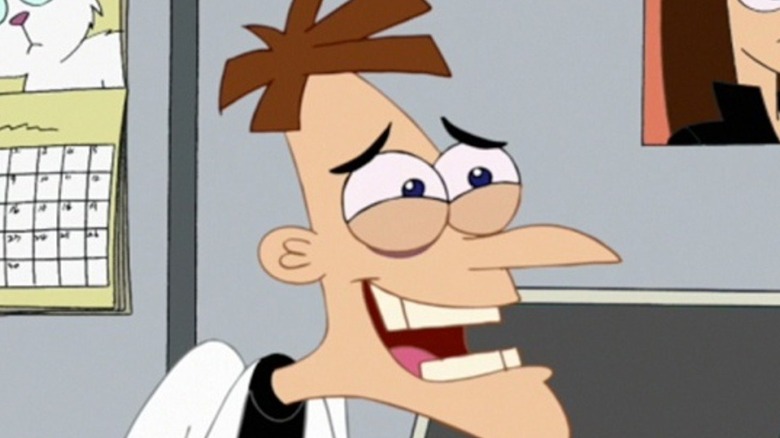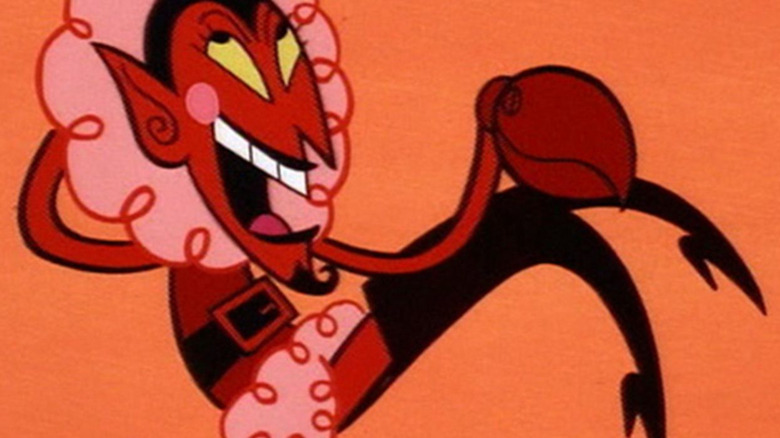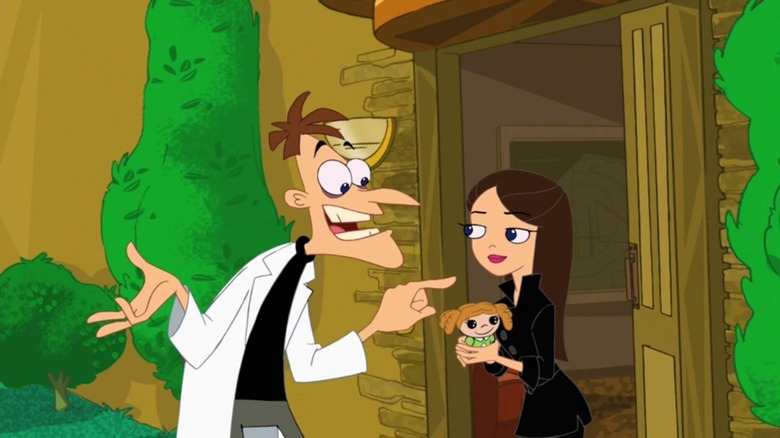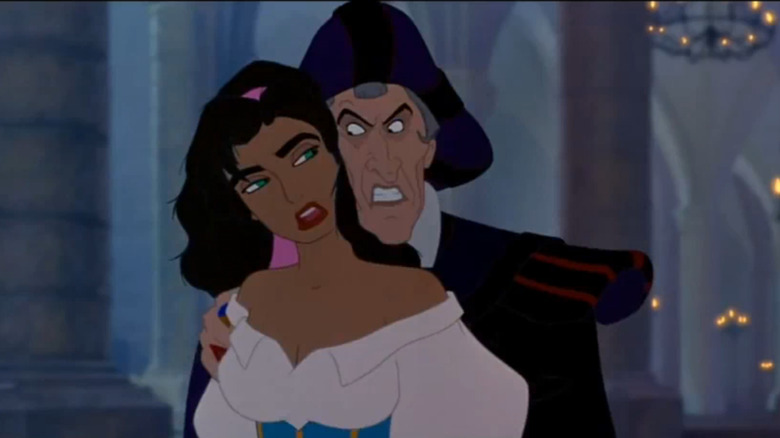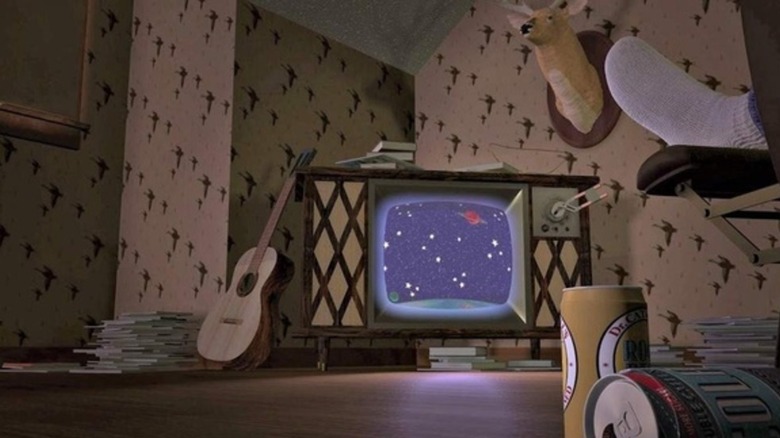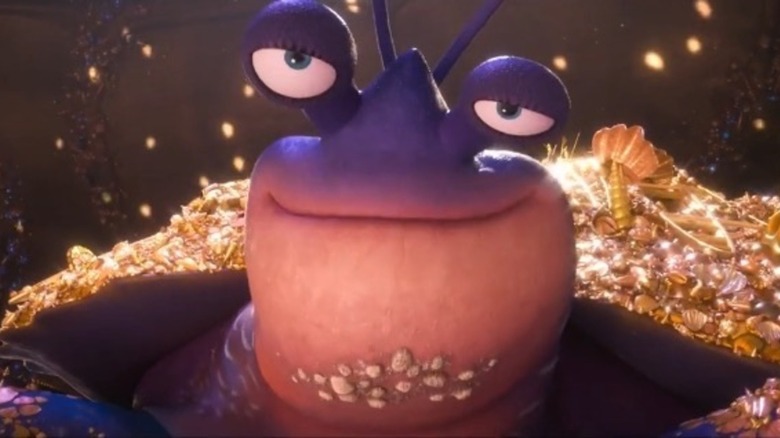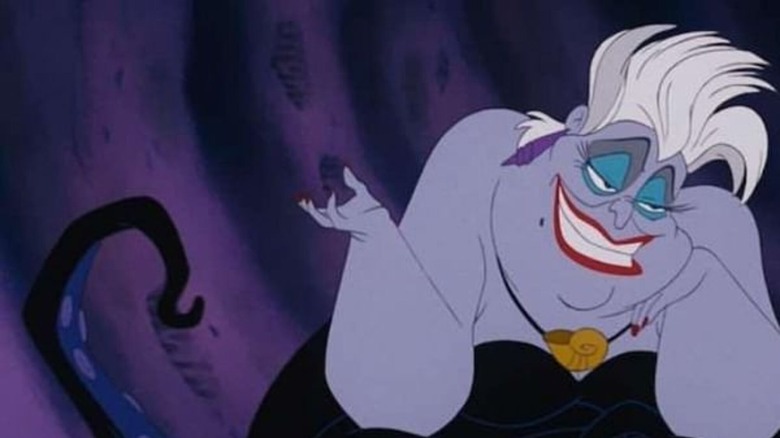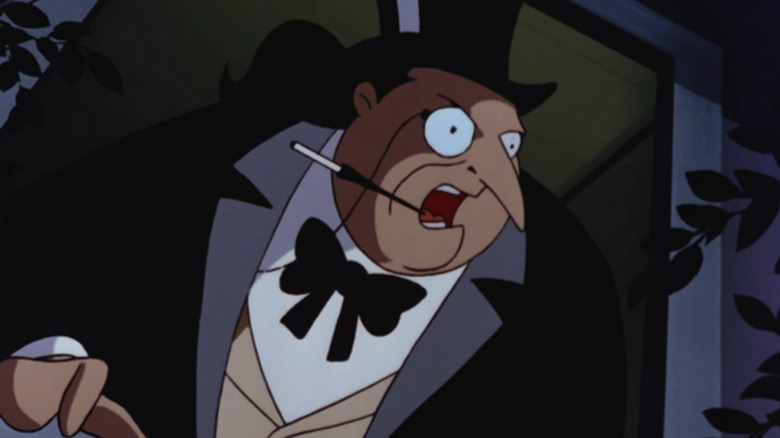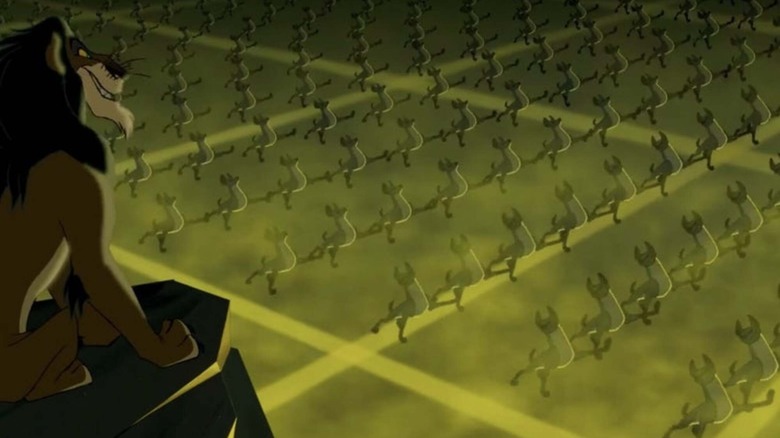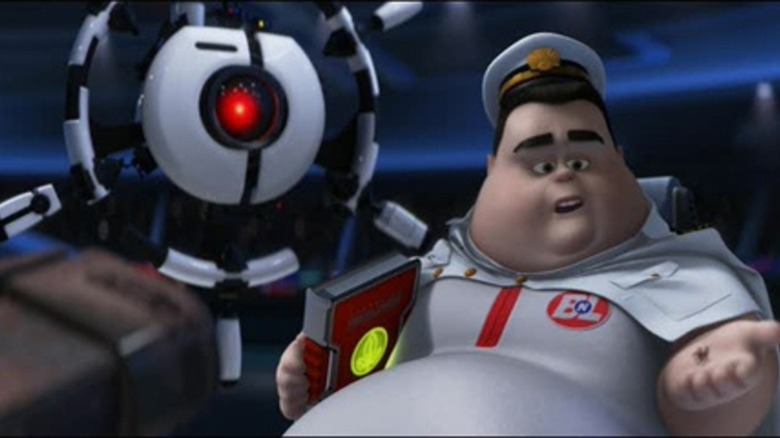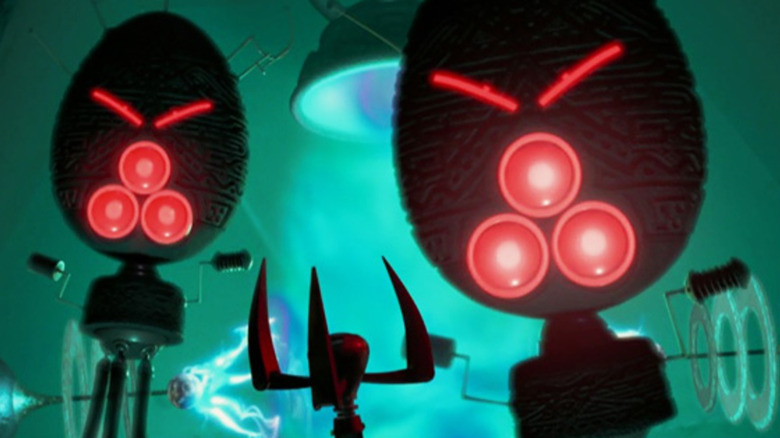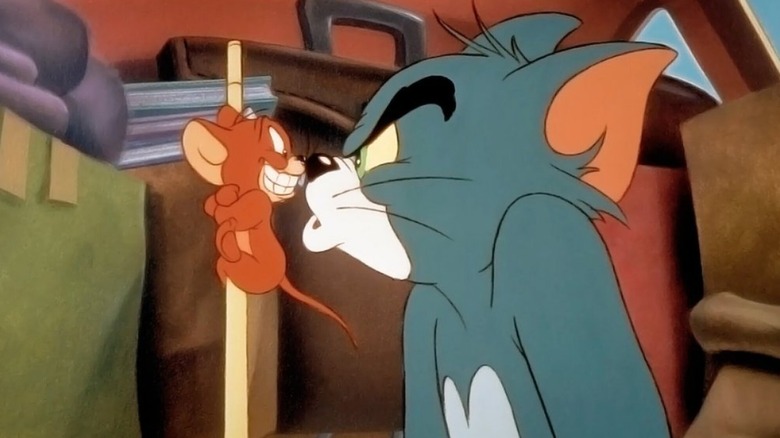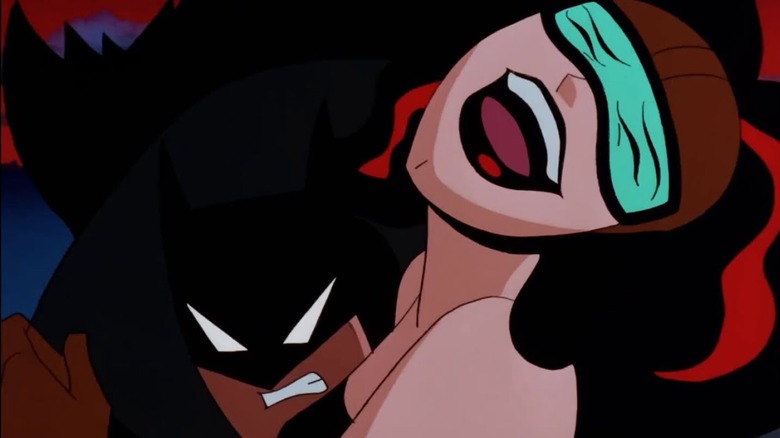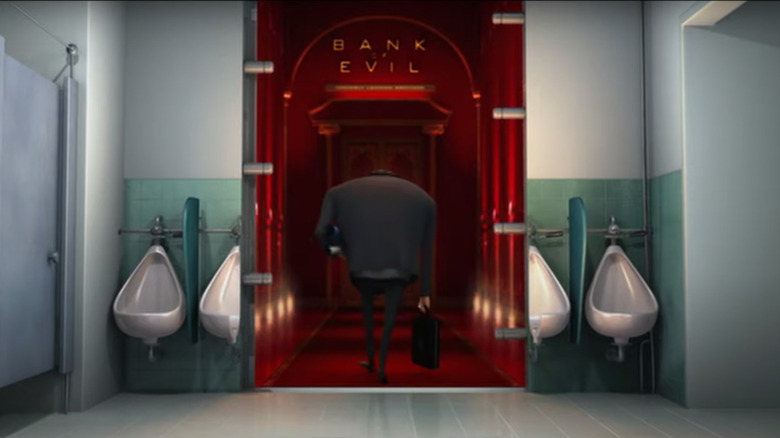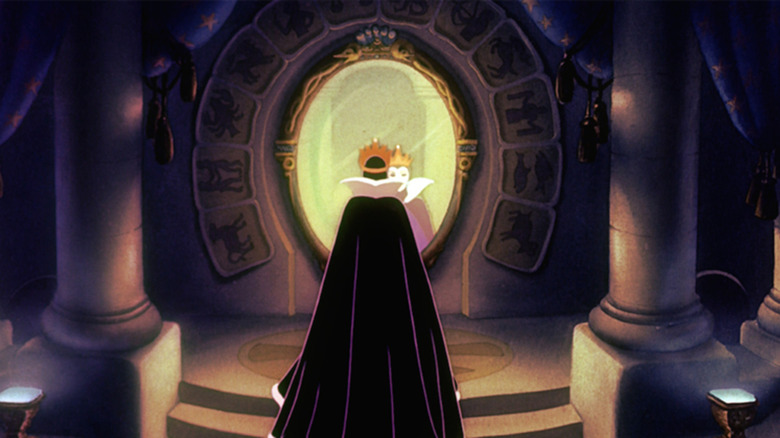Things Only Adults Notice About Cartoon Villains
Cartoons, more often than not, are intended as an escape from the real world. Most cartoons take place in fantastical settings that have peripheral resemblance to life as we know it, starring heightened versions of real people, with villains who encapsulate humanity's worst fears — typically wrapped up in bright colors and funny voices.
The best cartoons, perhaps, are the ones that you can watch as an adult and still appreciate the story and characters. Of course, the world view of an adult is quite different from that of a child, so jokes or social commentary that the writers inserted into the cartoons specifically for adult minds are typically on the sly.
Over the years, there have been a number of iconic cartoon villains who have thrilled audiences in movies and on television. Such villains can have unexpected depth that you only notice once you've grown up a bit. Here are 14 villains who might appeal to kids, but their finer nuances are more suited towards mature viewers.
Satan fights the Powerpuff Girls
The 1998-2005 Cartoon Network series "The Powerpuff Girls" might just be the cutest take ever on superheroes. Blossom, Bubbles, and Buttercup are kindergarten-aged children who protect their town as super-powered beings. The girls have a great rogue's gallery filled with villains who are often just as brightly-drawn and cute as the heroines, from Princess Morbucks to Mojo Jojo.
But amidst all that cuteness lies a disturbing anomaly known as His Infernal Majesty or simply, HIM. This strange red creature has a soft, seductive voice, horn-like ears, a goatee, and thigh-high boots that look an awful lot like hooves. Adults will notice that description sounds a lot like popular depictions of the Prince of Darkness, Satan himself. HIM is also different from the show's regular villains in that its chief aim is not world domination but rather to corrupt the Powerpuff Girls' innocent natures.
That motivation is similar to Satan's desire to corrupt pure souls with promises of grand rewards. We have also seen that nothing the Powerpuff girls do has any physical effect on HIM. All they have to oppose him is the purity of their souls, and their ability to withstand his corruptive influence.
Dr. Doofenshmirtz is the best parent
Dr. Heinz Doofenshmirtz is the main villain of "Phineas and Ferb" (2007-2015). A classic mad scientist with improbable inventive skills, Doofenshmirtz's dearest wish is to conquer the tri-state area. Doofenshmirtz doesn't have a lot of friends or family, but he is deeply attached to his daughter Vanessa. He can often be seen worrying about her and saving her from trouble, and he even gives up being evil for her sake in the series finale.
All of that makes Doofenshmirtz one of the top parents in cartoon history, despite being viewed as an evil villain. In fact, Doofenshmirtz is a far better parent than even Phineas and Ferb's parents. Every episode of the show has the boys engaging in an outrageous adventure, with no adult around to stop them from building rollercoasters, messing with time travel, engineering giant robots, or traveling between dimensions.
Even worse, when their dad occasionally found out about their outrageous adventures, he actively participated in things like driving actual racing cars in their backyard. Seriously, the attitude of Phineas and Ferb's parents borders on the neglectful — especially when compared to the lengths that Doofenshmirtz goes to while trying to protect Vanessa.
Judge Frollo had the most disturbing motivation
Disney fairytales tend to stay away from lewdness, keeping in mind their very young audience. Most Disney villains are motivated by PG-13 impulses, like a desire for magical power or wealth. Not so with Judge Claude Frollo, the main villain of 1996's "The Hunchback of Notre Dame." Frollo was all kinds of messed up.
Despite being the Minister of Justice of Paris, Frollo's worldview was uniquely unjust in that he viewed everyone other than himself as sinners and lesser beings. That was why Frollo was highly disturbed by the unusual passions awakening in his bosom at the sight of the beautiful Esmeralda. In fact, Frollo sings an entire song "Hellfire" about how hot he is for Esmeralda, how his feelings are her fault, and how he will not rest until he gets with her whether she's into him or not.
It's pretty disturbing watching a Disney character singing about his desire to sexually assault the heroine. The idea is so disturbing that Disney actually deleted a scene from "The Lion King" where Scar talks about wanting to bed Nala. Apparently the team behind "The Hunchback of Notre Dame" didn't get that memo.
Sid from Toy Story comes from a broken home
Sid Phillips from 1995's "Toy Story" managed to be a terrifying villain despite only being an 11-year-old kid. That was because Sid delighted in breaking apart toys and reconstructing them in grotesque, horrific ways. The obvious pleasure Sid takes in mutilating beautiful little toys would sound alarm bells for any psychiatrist, as well as child protective services.
Sid displays classic signs of a child who has suffered neglect and abuse. In the movie, we get a brief glimpse of Sid's father asleep on a reclining chair — a deer head mounted on the wall shows that Mr. Phillips likes to inflict violence on others. The fact that he is asleep in the middle of the day shows he is likely jobless, and the many empty bottles littering the room likely indicate an alcoholic who doesn't take care of his surroundings.
All these hints, alongside Sid's fear of waking his father up, point towards the Phillips household being an unhappy one. How much of Sid's sadistic impulses are the result of his father may be debatable, but this much is clear: The kid is seeking an outlet for his anger by hurting toys.
Tamatoa was based on David Bowie
Disney often makes use of pop culture icons while creating their animated characters, a trend that included 2016's "Moana" via Tamatoa, a giant flamboyant crab that craves shiny, valuable objects. Tamatoa's appearance was quite distinctive, featuring differing pupil sizes and differing eye colors in his bioluminescent form.
For older viewers, this look might evoke memories of iconic glam-rock singer-songwriter David Bowie, and that is no accident. The look of Tamatoa was based on Bowie, and the character's big musical number "Shiny" was written with Bowie in mind, as the film's songwriter Lin-Manuel Miranda told People in 2016. "I'd been listening to Bowie on a loop," he explained. "I was like, well I'm writing a glam rock tune for this crab, this jewel-encrusted crab."
To channel the spirit of Bowie further, Tamatoa was voiced by New Zealand's Jemaine Clement, who has been known to bust out a credible impression of Bowie in projects like "Flight of the Conchords." As Clement told The AU Review that same year: "When I tried to record [Shiny] in the character's voice, [Miranda] just kept pushing the Bowie thing, do it more Bowie, he wanted glam, like a T-Rex Bowie."
Ursula was based on a drag queen
Ursula from 1989's "The Little Mermaid" is as rollickingly entertaining as a Disney villain can get. A weird hybrid of a human woman and an octopus, Ursula was a rare, full-figured central Disney character who believed in wearing heavy makeup and making magical deals with minors to gain control of the seven seas.
While her magical dealings were entirely fictional, the look of Ursula had an unexpected basis in reality. Rob Minkoff, animator for "The Little Mermaid," revealed in the 2020 Disney+ documentary "Howard" (via RadioTimes) that he came up with a host of possible designs for Ursula's character, including one based on famed drag queen Divine, best known for playing Edna in 1988's "Hairspray." When the film's lyricist, Howard Ashman saw the drawings, one instantly stood out from the rest.
"I did a design based on Divine and that design was put on a board with other designs," Minkoff explained. "When Howard Ashman came in to look at the designs he zeroed in on that one." Once the team honed in on the primary inspiration, they began to study Divine's stage presence to help come up with Ursula's expansive mannerisms and growly voice.
The Penguin was based on a cigarette mascot
One of Batman's greatest enemies from comics, cartoons, and live-action is the Penguin. A Gotham crime boss with a taste for the finer things in life, the Penguin has one of the most distinct appearances in all of Batman's rogue's gallery. The short, round body shape, the monocle, the deadly umbrella, the expensive tuxedo, and the long cigar permanently wedged between his teeth make Penguin instantly recognizable to fans and general audiences alike.
The creators of Batman and his supporting cast were Bob Kane and Bill Finger. The duo have given somewhat conflicting accounts of the creation of the Penguin, but Finger has mentioned in interviews that he was inspired to create a villain that resembled Emperor Penguins, whose black and white skin are reminiscent of the tuxedos worn by high-society tycoons and aristocrats.
On the other hand, Kane stated (via Nothing But Comics) that the Penguin was based on cartoon mascot "Willie the Kool Penguin," who was used to advertise for Kool menthol cigarettes. Some of the comic strips involving Willie show the character smoking a cigarette while hanging from a parachute, quite similar to one of the Penguin's most iconic poses as he hangs from his floating umbrella with a cigar stuck between his teeth.
The Lion King's Nazi imagery
1994's "The Lion King" is generally agreed to be one of the greatest Disney movies of all time. Despite being a story about talking animals, the movie was grounded in mature themes as it took its cues from the Biblical stories of Joseph and Moses, William Shakespeare's "Hamlet" — and also, perhaps, the infamous Leni Riefenstahl.
In the song "Be Prepared," sung by the movie's main bad guy Scar, we see Hyenas marching past the villainous lion in a highly regimented style. The movements of the Hyenas, and the view of their formations, was based specifically on Nazi propaganda films (the most effective of which were directed by Riefenstahl, nicknamed "Hitler's filmmaker") that became both terrifying and instantly-recognizable as a show of force to the Western world. According to a 1994 article by Entertainment Weekly (via Business Insider), the idea for the song "grew out of one sketch by story staffer Jorgen Klubien that pictured Scar as Hitler. The directors ran with the concept and worked up a 'Triumph of the Will'-style mock-Nuremberg rally."
The idea worked, and "Be Prepared" became one of the most iconic parts of the original "Lion King." Unfortunately, the 2019 live-action remake of the scene left a lot to be desired, as the epic visuals and song lyrics were replaced by something much more mild and brief.
Wall-E was inspired by Stanley Kubrick
Pixar is a studio that excels in telling stories filled with warmth and empathy. Stanley Kubrick was a filmmaker renowned for telling stories filled with tension, coldness and dread. The two might not seem to have much of an overlap at first blush, but 2008's "Wall-E" brought the two together in an unexpected manner through the introduction of its main villain.
In "Wall-E," the central antagonist is a rogue AI called Auto that has control of a vessel carrying humanity into the furthest reaches of space. Although the humans think they are in control of the ship, Auto reveals that his directive is to keep humanity from returning to Earth. In compliance with the order, Auto takes complete control over the vessel from its human chain of command.
Auto's looks and personality are clearly based on the villainous HAL 9000 from Kubrick's "2001: A Space Odyssey." But the references don't end there. A scene from "2001" where an ape learns to stands on its two feet is reimagined in "Wall-E" when the Captain of Auto's space vessel finally leaves his chair to stand on his feet, learning self-reliance in the process after having depended on Auto for everything for so many years.
The War of the Worlds in Chicken Little
2005's Disney film "Chicken Little" was a heartfelt story about growing up, standing up for your beliefs, and learning to let your children become self-reliant. In addition to all the heartwarming stuff, the movie also paid homage to one of the most influential, terrifying sci-fi novels of all time, H.G. Wells' 1898 masterpiece "The War of the Worlds."
Wells' novel tells of an invasion of Earth spearheaded by alien machinery that takes the form of "A monstrous tripod, higher than many houses, striding over the young pine trees, and smashing them aside in its career ... articulate ropes of steel dangling from it, and the clattering tumult of its passage mingling with the riot of the thunder." Fans of "Chicken Little" will notice this description fits perfectly for the machines that invaded the planet in the final act of the film.
Fortunately, the machines in "Chicken Little" were a lot more benign than the ones that showed up in "The War of the Worlds." It is revealed in the final act of the movie that the aliens initially visited Earth just to gather acorns, and later returned with an entire armada because they thought one of their own was being held hostage by Earthlings. Once the misunderstanding is cleared up, the aliens return peacefully to their home planet.
The real villain of Tom and Jerry
For multiple generations of children, the "Tom and Jerry" cartoons have been a popular retelling of the classic "David vs. Goliath" narrative. In this case, the big, dim-witted cat Tom is the evil Goliath, while the smaller, quick-witted Jerry is plucky little David, who humbles the giant with his brains and will power. But is the story really that simple?
Once you grow up and need to look into buying or renting your own house, you begin to realize what a major problem house pests like mice and cockroaches can be. From spreading disease to spoiling your food, pests can be a real problem for homeowners. Which is why house pets like cats have often been used to eliminate pests and keep the home safe from further attacks.
Once you start looking at the situation from that angle, you realize that Jerry was the villain of the show, an uninvited house pest that ran roughshod all over the house eating and taking whatever he wanted. Meanwhile, Tom was simply the house pet trying to do what it had been trained to accomplish, keeping the home safe from unwanted rodents. Sure, Tom was always left frustrated after his encounters with Jerry — but just imagine how Tom's owners must have felt.
Roxy Rocket had a weird fixation
Adult innuendo in cartoons aimed at children is not a new thing. But sometimes the innuendo is so in-your-face you can't help but be surprised by the audacity of the show's writers. Case in point, Roxy Rocket's appearance in "The New Batman Adventures," where she had a singular obsession with getting laid.
In the episode "The Ultimate Thrill" (Season 3, Episode 11), viewers are introduced to Roxy, a daredevil stuntwoman who turned to a life of crime to satisfy her craving for excitement. In Roxy's mind, her reaction to danger is quite similar to sexual arousal. Roxy's weapon of choice is a giant, phallic-shaped rocket, and her obsession with crime quickly turns into an obsession with Batman.
Throughout the episode, Roxy makes one sexually charged comment after another, telling Penguin about Batman "I was the best he ever had," and "I love a man with staying power." But the most brazen scene comes at the end. When Roxy's last daring heist is stopped by Batman, she appears to be in the throes of ecstasy as she screams, "Oh, baby, you're the best!" Even Batman must've been torn over whether he should take Roxy to jail or back to the Batcave.
The despicable entrance in Despicable Me
In the proud tradition of "Shrek" and "Megamind," 2010's "Despicable Me" had you rooting for the bad guy. Felonious Gru was an aspiring super-villain who dreamed of pulling off the ultimate heist to prove himself. But grand villain schemes need grand amounts of money. For that, Gru was forced to go to the Bank of Evil, an organization that offers loans to supervillains who can prove their schemes are sufficiently evil.
Naturally, any organization that willingly names itself "Bank of Evil" would want to stay hidden from the authorities. To that end, the entrance to the bank is hidden behind a urinal. But the truly dastardly touch is that the entrance is behind the middle urinal. While children might not understand the importance of placing the entrance in such a spot, adults with experience using public restrooms can understand the genius behind the plan.
When you go to a public restroom, your instinct is to use the urinal to the left or the right, because that minimizes the chance of having to pee standing next to someone. Only someone truly evil and twisted would willingly use the middle urinal, where he could be flanked on both sides by others. It is exactly that kind of a dastardly mind that the Bank of Evil would be interested in doing business with.
The Evil Queen has NPD
The Evil Queen from 1937's "Snow White and the Seven Dwarfs" might just be the most iconic Disney villain of all time. She is such an inextricable part of pop culture, in fact, that most fans don't even realize she has an actual name, Grimhilde. The Queen is often portrayed as the personification of evil, but adults might be more likely to diagnose her as suffering from Narcissistic Personality Disorder (NPD).
NPD, also referred to as Megalomania, is a mental condition which has been officially recognized by the American Psychiatric Association. People suffering from NPD have an exaggerated sense of their own importance, as well as a deep need for excessive attention and admiration. This in turn leads to the sufferer having trouble maintaining relationships due to a lack of empathy for others.
These symptoms fit the Evil Queen to a T. The tragic part is, NPD is actually treatable, but the people who suffer from it have such a high opinion of themselves that they refuse to recognize they have a problem that requires therapy. Grimhilde's time could have been put to much better use if she had stopped obsessing over Snow White so much and booked an appointment with the Dwarf named "Doc" instead.
